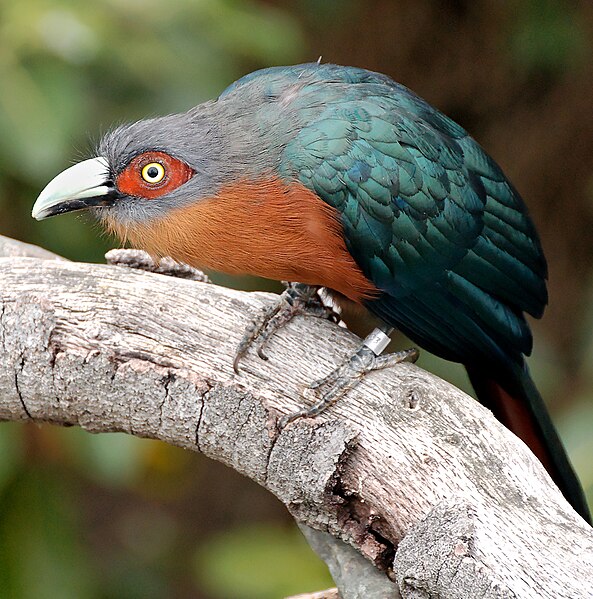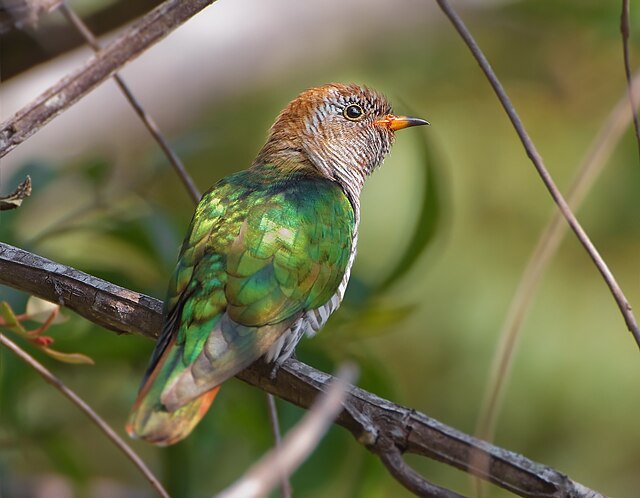The Asian koel is a member of the cuckoo order of birds, the Cuculiformes. It is found in the Indian Subcontinent, China, and Southeast Asia. It forms a superspecies with the closely related black-billed koels, and Pacific koels which are sometimes treated as subspecies. The Asian koel like many of its related cuckoo kin is a brood parasite that lays its eggs in the nests of crows and other hosts, who raise its young. They are unusual among the cuckoos in being largely frugivorous as adults. The name koel is echoic in origin with several language variants. The bird is a widely used symbol in Indian and Nepali poetry.
Image: Asian koel
Image: Eudynamys scolopacea 20080801
A female of the nominate subspecies
Adult male of nominate race (West Bengal, India) showing the crimson iris. Young birds have dark irides.
Cuckoos are birds in the Cuculidae family, the sole taxon in the order Cuculiformes. The cuckoo family includes the common or European cuckoo, roadrunners, koels, malkohas, couas, coucals, and anis. The coucals and anis are sometimes separated as distinct families, the Centropodidae and Crotophagidae, respectively. The cuckoo order Cuculiformes is one of three that make up the Otidimorphae, the other two being the turacos and the bustards. The family Cuculidae contains 150 species, which are divided into 33 genera.
Cuckoo
The chestnut-breasted malkoha is typical of the Phaenicophaeinae in having brightly coloured skin around the eye.
Some species, such as the Asian emerald cuckoo (Chrysococcyx maculatus) exhibit iridescent plumage.
The great lizard cuckoo is a large, insular cuckoo of the Caribbean.








